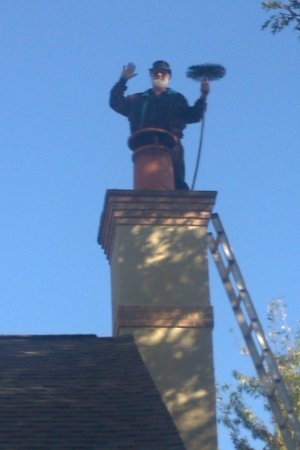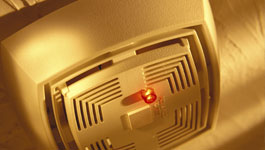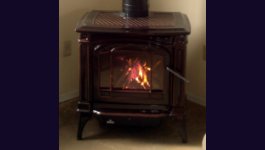Flue Lining

What is A Flue Liner?
Nearly all chimneys have a liner. Liners are the replaceable part of a chimney. They serve a couple functions. The first is to "contain and conduct the by-products of combustion to the outer atmosphere". So a liner must be intact to get the exhaust out. Another function is to provide a layer of insulation to prevent heat transfer to nearby combustibles.
Most chimneys have been lined with terra cotta flue tiles. These 2 foot long sections of clay pipe started being used as part of chimney code in 1905. However, we often find chimneys that were built in the 1920's that do not have liners. If the chimney is unlined, or the terra cotta tiles have become damaged, then it is time to install a new liner.
Stainless Steel Liners
Liners come in different grades of stainless steel, or on occasion, aluminum. The type of metal used for the flue liner depends on the appliance and the type of fuel it is burning. Stainless steel liners can be had in 304, 316, and 316Ti grades. 316 stainless steel is most often used. The 304 grade is suitable for wood, but not oil or gas due to the acidic nature of the flue gasses. At Swift, we go the extra step to install 316Ti (a Titanium alloy) which has superior heat and corrosion resistance. This grade of stainless steel is suitable for all fuels.
Aluminum Liners
Aluminum liners have been acceptable for gas fired appliances under certain conditions. The problem is, when a new liner is needed, we seldom have the conditions that permit the use of aluminum. For instance, when the terra cotta flue liner has degraded form the acids found in flue gasses from burning oil or methane the tiles and often the surrounding masonry is soaked with the acid. That acid will rot an aluminum liner in a very short period. In one case, we found an aluminum liner that had become perforated like Swiss cheese in only six months! One manufacturer of aluminum liner specifically states that in such conditions their liner must not be used.
Further, aluminum has a tendency to kink shut during installation. It’s strength is light duty. When installed in tight or poorly built flues, aluminum liners have a tendency to get torn by projections. For these reasons, corrosion resistance and strength, Swift always installs stainless steel liners. If you have an aluminum liner, we strongly recommend a regular video inspection to see if it continues to be uasble.
Open Joints and FireGuard
One reason that a chimney might have a new liner recommended is simply that the joints between the flue tiles are open. The FireGuard ceramic product provides another alternative. Remember, the flue tiles are only two feet long. So every two feet there is a joint. Whether the tiles were stacked dry, or the cement used has rotted out, the joint is open, allowing flue gasses to escape to the chase or even into the home. Be sure to visit our FireGuard Page if you only have open joints.
Click Here to Schedule an Appointment for an Inspection or Estimate.






